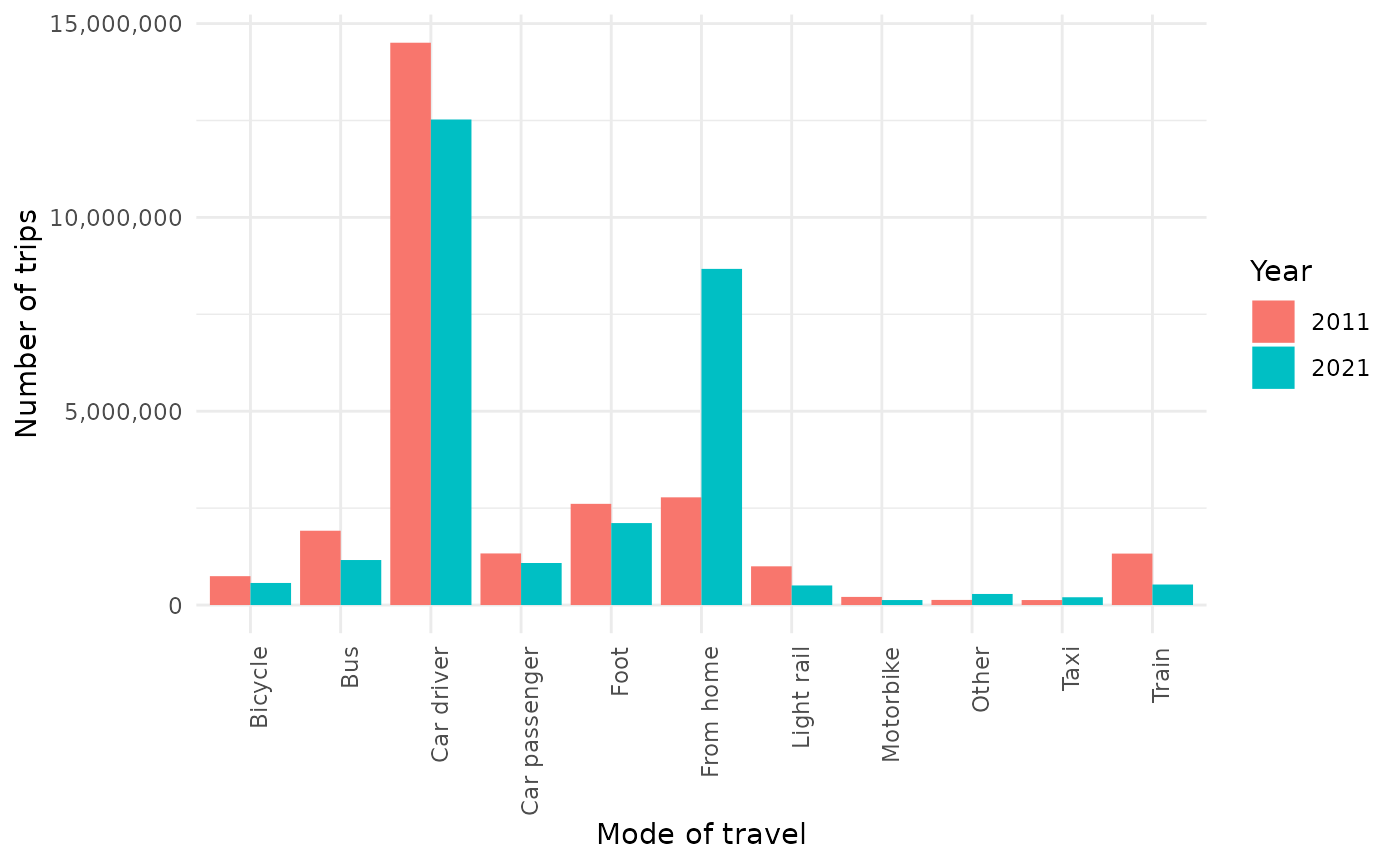#> collapse 2.0.9, see ?`collapse-package` or ?`collapse-documentation`
#>
#> Attaching package: 'collapse'
#> The following object is masked from 'package:stats':
#>
#> DIntroduction
This document provides an introduction to 2011 and 2021 OD data and how they can be compared to explore changes in travel patterns in relation to particular corridors affected by new interventions.
The reproducible source code underlying this document can be found at github.com/robinlovelace/changeOD.
Datasets
2011 Origin-Destination data
2011 data was taken from the open access data provided by the WICID
service and downloaded with the function get_od from the
pct package. The data is available at WICID
and is based on the 2011 Census. The data is available at the local
authority level and includes the following variables (after removing
unwanted variables):
-
geo_code1: Origin code -
geo_code2: Destination code -
from_home: Working from home -
light_rail: Underground, metro, light rail, tram -
train: Train -
bus: Bus -
taxi: Taxi -
motorbike: Motorcycle, scooter or moped -
car_driver: Driving a car or van -
car_passenger: Passenger in a car or van -
bicycle: Bicycle -
foot: On foot -
other: Other method of travel to work
2021 Origin-Destination data
See the data at WICID (requires login for data with mode).
The open access OD data can be obtained as follows from this link: WICID.
We undertook the following steps to process the data:
- Download the data from the WICID service.
- Read the data into R.
- Check the structure of the data.
- Check the cross-tabulation of mode
- Aggregate the data by mode of travel and remove unwanted places of work.
- Pivot the data wider to match the 2011 dataset.
- Change the names to match the 2011 dataset.
- Compare the 2021 and 2011 datasets.
